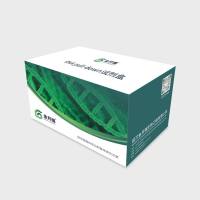Proteins mediate virtually all biological processes. Understanding the mechanisms by which proteins function requires a knowledge of their three-dimensional (3D) structures. As a consequence of the genome and full-length cDNA sequencing projects, there are several orders of magnitude more protein sequences compared with experimentally determined protein structures. To bridge this information gap, there is a considerable impetus to predict accurately the structures of proteins from sequence information. Protein structure prediction using bioinformatics can involve sequence similarity searches, multiple sequence alignments, identification and characterization of domains, secondary structure prediction, solvent accessibility prediction, automatic protein-fold recognition, and constructing 3D protein structures to atomic detail (
see Fig. 1 ). The bioinformatics techniques used in predicting protein structure depend on the outcome from the analysis outlined in Fig. 1 and Table 1 .
Fig. 1. Protein structure prediction flowchart highlighting the steps involved in constructing 3D structural models from protein sequences by using bioinformatics.
Table 1 Types of Protein Structure Prediction Projects a
|
Description of project based on the outcome of the following analysis
|
Standard
|
Nontrivial
|
Virtually impossible
|
|
Identification of sequence homolog
|
Yes
|
Yes
|
Yes/No
|
|
Identification of structural homolog
|
Yes
|
No
|
No
|
|
Mapped domain boundaries
|
Yes/No
|
Yes
|
No
|
|
Biochemical characterization
|
Yes/No
|
Yes/No
|
No
|
a A protein structure project can be classed as standard, nontrivial or virtually impossible, depending on the outcome of the analysis outlined. A standard project indicates that the protein fold can be predicted with a high degree of confidence. A nontrivial prediction requires much biochemical characterization such as site directed mutagenesis, circular dichroism and Fourier transform infrared to support and validate the fold recognition. Expect results, but do not expect accurate or reliable predictions from a project of the third type, deemed here as virtually impossible.








